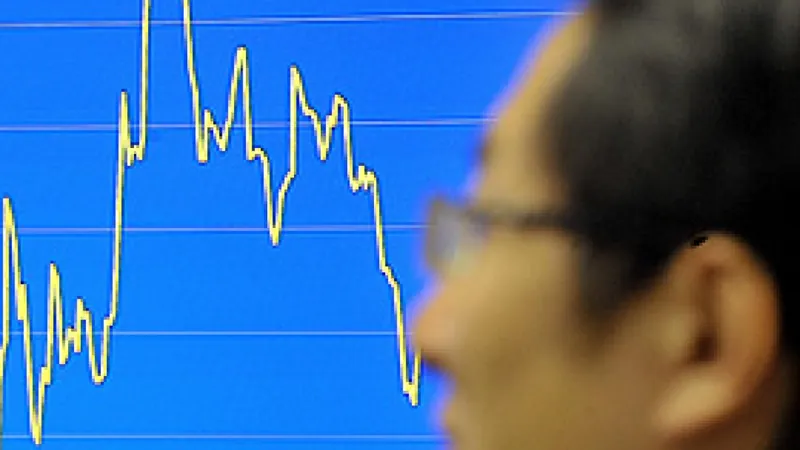
Trump's Tariff War: The High Stakes for China's Economy
2025-04-09
Author: Emma
The Trade War Kicks Off
The trade war has officially begun! As of 12:01 AM EST on Wednesday, President Donald Trump's controversial "reciprocal" tariffs took effect, and China is feeling the heat more than any other country, facing staggering levies of up to 125% on goods sold to the U.S.
Tariffs and Tensions—A Rapid Escalation
The escalating trade conflict means that anything America imports from China now costs more than twice what it did just two months ago. While the U.S. has raised its tariffs, China retaliated with an 84% increase on U.S. goods—a tit-for-tat that reflects a rising trend of hostility between the two economic giants.
Market Shockwaves
Stock markets are on shaky ground following the recent tariff announcements, with investors anxious about the implications of this global trade turmoil. The threat of a full-blown trade war has cast a shadow over economies worldwide.
Trump's Stance on China
Trump has long accused China of taking advantage of the U.S. through unfair trade practices. His administration’s protectionist agenda aims to revitalize American manufacturing and bring jobs back home. But as tariffs ramp up, so do concerns about their impact on all parties involved.
The Current State of Tariffs
Since early 2025, tariffs on Chinese imports gradually climbed. Trump initially imposed a 10% tariff in February, which he later doubled. By the end of March, the rate spiked to a total of 54%. China's response included raising their tariffs on U.S. goods to 34%.
Trump's Ultimatum and China's Stand
In a social media post, Trump warned of further escalating tariffs, threatening an astounding additional 50% unless China retracted its own levies. As the ultimatum approached, tensions only heightened.
In response, China’s government remained firm, stating their commitment to respond with necessary measures, proclaiming that U.S. tariff hikes would only trigger economic backlash, including market fluctuations, inflation, and a potential recession in the U.S.
What's at Risk for China's Economy?
Both the U.S. and China are vital trade partners, with American imports from China totaling nearly $438.9 billion last year—making up about 3% of China's GDP. Experts predict that the newest tariffs could drag China's GDP down by up to 2.4%, significantly impacting their growth prospects.
A Bleaker Growth Forecast
Economic analysts are increasingly pessimistic, with some projecting that China's growth rate might drop to just 4% amid the ongoing crisis—the slowest pace since Trump first took office. The country's economy is already grappling with deflation, a struggling property market, and high debt levels.
China's Resilience and Government Response
Despite these challenges, experts argue China is better equipped to handle this trade assault than many might think. Chinese Premier Li Qiang has assured that the government can mitigate external shocks, with proposed measures including bolstered domestic stimulus.
What Lies Ahead for Beijing?
In the wake of these tariffs, experts predict that China may look to enhance its ties with other trading partners and maintain an aggressive economic stimulus strategy. Possible measures could involve depreciation of the yuan to counteract tariff impacts, and greater emphasis on support for the export sector.
The Bigger Picture—Who Will Feel the Pain?
While concerns about China's economic resilience are evident, some economists shift their focus to the U.S. economy, predicting that its vulnerabilities may pose a greater threat in the long run. As the trade war unfolds, all eyes will be on how both nations navigate these turbulent waters.









 Brasil (PT)
Brasil (PT)
 Canada (EN)
Canada (EN)
 Chile (ES)
Chile (ES)
 Česko (CS)
Česko (CS)
 대한민국 (KO)
대한민국 (KO)
 España (ES)
España (ES)
 France (FR)
France (FR)
 Hong Kong (EN)
Hong Kong (EN)
 Italia (IT)
Italia (IT)
 日本 (JA)
日本 (JA)
 Magyarország (HU)
Magyarország (HU)
 Norge (NO)
Norge (NO)
 Polska (PL)
Polska (PL)
 Schweiz (DE)
Schweiz (DE)
 Singapore (EN)
Singapore (EN)
 Sverige (SV)
Sverige (SV)
 Suomi (FI)
Suomi (FI)
 Türkiye (TR)
Türkiye (TR)
 الإمارات العربية المتحدة (AR)
الإمارات العربية المتحدة (AR)